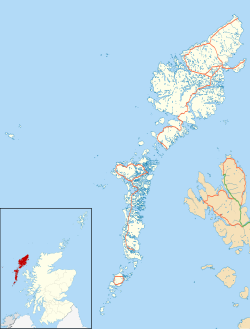Swainbost
| |
|---|---|
 An unnamed lochan at Swainbost | |
Location within the Outer Hebrides | |
| Language | Scottish Gaelic English |
| OS grid reference | NB511625 |
| Civil parish | |
| Council area | |
| Lieutenancy area | |
| Country | Scotland |
| Sovereign state | United Kingdom |
| Post town | ISLE OF LEWIS |
| Postcode district | HS2 |
| Dialling code | 01851 |
| Police | Scotland |
| Fire | Scottish |
| Ambulance | Scottish |
| UK Parliament | |
| Scottish Parliament | |
Swainbost (Scottish Gaelic : Suaineabost) is a village on the Isle of Lewis in the district of Ness, in the Outer Hebrides, Scotland. The name Swainbost meaning Sweins steading is of Viking derivation. [1] The settlement is situated in the parish of Barvas. [2] According to Ronald Black, Swainbost was re-settled during the Highland Clearances in 1842. The island's Anglo-Scottish landlord had expected the crofters evicted from Uig to emigrate and only reluctantly granted them land at Swainbost to avert the threat of violence. [3]
Contents
At the shore, there is a large depression called Suaineabost Sands which displays glacier activities and is run through by a river.
